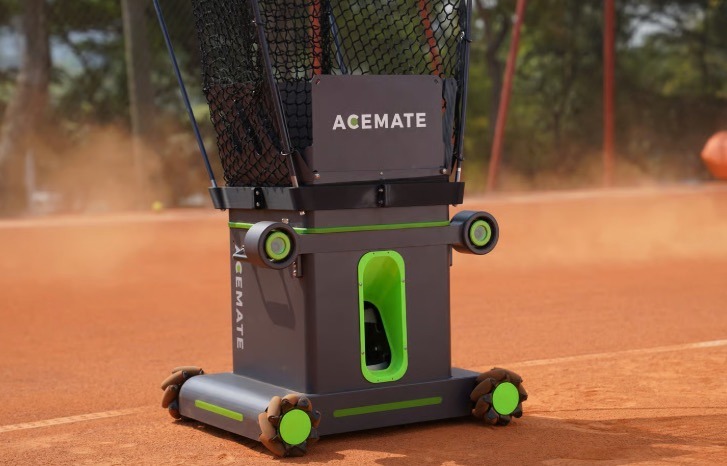SwitchBot’s Rise: From Smart Retrofits to AI Hardware, Now Aiming for IPO
6/4/20253 min read


Image source: New Atlas
Acemate, an AI-powered tennis ball machine capable of returning volleys autonomously, raised over 10 million RMB ($1.37 million) in just 20 days on Kickstarter. The project was spearheaded by Li Zhichen, founder of Shenzhen-based Woan Technology, the company behind the smart home brand SwitchBot.
What caught our attention is not just the crowdfunding success but the broader impact of SwitchBot, which has quietly become a global contender in the smart home space. On June 8, Woan Robot (Shenzhen) Co., Ltd. filed for an IPO on the Hong Kong Stock Exchange. According to its prospectus, the company reached $83.57 million in revenue in 2024 with a 51.7% gross margin. More than 95% of that revenue came from international markets.
Smart Upgrades, Not Overhauls
Founded in 2015, Woan launched SwitchBot in 2016 with the goal of simplifying smart home adoption. Early products were tested on Kickstarter, not only to validate demand but also to build a loyal user base. While many Chinese hardware brands focused on North America, SwitchBot explored underserved yet promising international markets.
Their first product, the SwitchBot Bot, offered a non-invasive way to automate switches. It mimicked a finger press to toggle lights, coffee makers, or wall buttons — all controlled through a mobile app. At just $19, the device was both affordable and clever. It avoided the need for costly renovations, appealing to renters and homeowners alike.
The Bot's success laid the foundation for SwitchBot's core philosophy: retrofit rather than replace. The product also supported IFTTT integration, enabling seamless automation with third-party smart devices. From the start, SwitchBot positioned itself not just as a gadget maker but as an ecosystem builder.
Building a Global Ecosystem
By 2018, SwitchBot had launched in new markets and expanded its lineup. Products like the SwitchBot Curtain, which motorizes traditional curtains without drilling or rewiring, struck a chord with consumers. Compact and easy to install, the Curtain was compatible with popular voice assistants and included ambient light sensors for intelligent automation.
Rather than overwhelming users with complex systems, SwitchBot emphasized convenience. Its Hub Mini centralized control of multiple devices and introduced Matter protocol compatibility — a universal standard that allows cross-brand communication in smart home setups.
Over the years, the SwitchBot ecosystem expanded to include smart locks, sensors, and security cameras. All followed the brand's retrofit-first design language. By mid-2025, SwitchBot had over 3.1 million registered app users and more than 9.1 million connected devices. More than half of users controlled two or more SwitchBot devices, reflecting strong ecosystem engagement.
Going Beyond Gadgets
In 2023, SwitchBot introduced its K10+ robot vacuum — compact, quiet, and ideal for tight urban homes. It became a crowdfunding success, highlighting the market's appetite for intelligent, space-saving designs.
The brand then pivoted to larger markets with the S10, a modular robot vacuum designed for Western households. It featured a unique base station and separate water module for automated cleaning and mop rinsing. Notably, the S10 used reverse charging from the robot to the water unit, solving the issue of inaccessible power outlets near plumbing fixtures. The campaign raised $1.28 million, a record for the brand.
SwitchBot is now moving beyond remote-controlled accessories. With the K20+ Pro, it is developing a modular AI-powered robot platform. Future iterations may include cameras, air purifiers, robotic arms, and even user-designed 3D-printed add-ons. The company’s R&D spending has grown at over 34% annually, signaling a commitment to deeper technological integration.
Final Thoughts
SwitchBot's success lies in a subtle but powerful insight: people want smart homes, but they don’t want to rebuild their homes. The brand’s tagline, "Upgrade instead of replacing," reflects this pragmatic approach.
Rather than pushing costly overhauls or full-stack systems, SwitchBot meets users where they are — offering affordable, install-anywhere devices that enhance daily convenience. It’s a user-centric model that has propelled them toward a global IPO and positioned them as an innovator in an increasingly crowded market.
As SwitchBot evolves into more complex, AI-integrated systems, the next chapter will test whether its retrofit DNA can adapt to the future of autonomous smart living.
Sources include: Statista, IDC, Kickstarter, SwitchBot IPO filings, SwitchBot.com, and third-party analytics platforms
Reproduction Notice:
This article is a translated and edited version of the original published by 白鲸出海 (White Whale Global) with author and publisher permission. All rights reserved to the original author. Translation and adaptation by GOVOLAT SL.
GOVOLAT S.L.
Overseas Brand Marketing and Management Partner
PLAZA CARME MONTURIOL, 11 1 PTA.3, Barcelona, Spain
